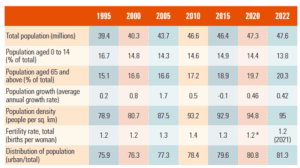View Photos of the 2023 Nissan Z

Greg PajoCar and Driver
The latest Nissan Z sports car jettisons the number prefix for a less-is-more model designation but offers more in the form of horsepower, eye appeal, and driving satisfaction.
Read the full review
The new Z’s styling captures the spirit of the original via its long domed hood with a sharp leading edge, DRL accents that mimic the round headlights of old, and the same sort of horizontal mesh grille that filled the space above the 240Z’s chrome bumper.
The 400-horsepower V-6 has abundant low-down torque and exhibits very little turbo lag, and the Performance edition comes with a clutch-type limited-slip differential to better paste that power to the pavement.
At an even 400 horsepower and 350 pound-feet of torque, the new 3.0-liter twin-turbo V-6 bests the 370Z’s engine output by 68 hp and 80 lb-ft, and in the process improves the car’s weight-to-power ratio from some 10 pounds per hp to just under 9 pounds per pony.
There are nine available colors, and six of them include a black roof—seven if you include the all-black one.
Yes, the grille opening is somewhat large, but that’s because the new 400-horsepower twin-turbo V6 requires copious amounts of cooling.
Step up to the Performance trim and you’ll get these 19-inch lightweight forged aluminum wheels and four-piston fixed-caliper front brakes instead of the base car’s 18-inch wheels and twin-piston sliding calipers.
All Sport grade Zs come with graphite-colored cloth upholstery, but the Performance interior features leather and synthetic suede in three color themes: graphite, red, and blue.
The original 240Z had three dashtop gauges such as these, but they dealt with different engine parameters because that car lacked a turbocharger.
The action of the Z’s six-speed manual is much less notchy than before, and in the Performance grade, it comes with Launch control in the form of no-lift shift, as well as SynchroRev Match.
This machine’s turbocharged 3.0-liter engine would make it the third 300ZX (or the first 300Z) if Nissan had followed the usual displacement-based numbering system, but we’re glad they went with Z because that’s how everyone has always referred to this car.
Advertisement – Continue Reading Below
This content is created and maintained by a third party, and imported onto this page to help users provide their email addresses. You may be able to find more information about this and similar content at piano.io




